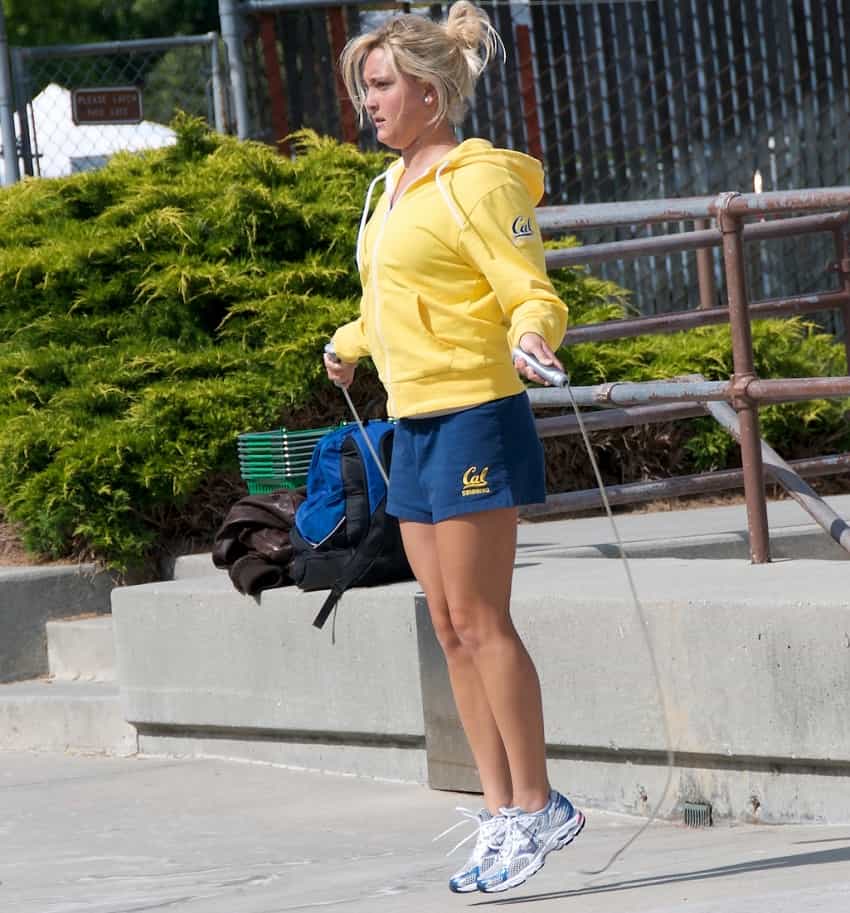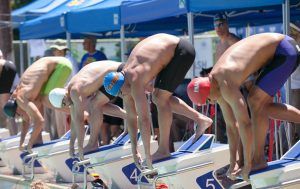In terms of conditioning, developing better athleticism, and injury-proofing, using a skip rope is about the best bang-for-your-buck dryland activity for those looking to develop into a more explosive swimmer. Here are 5 reasons swimmers should pick up the skipping rope.
Swimmers train hard in the pool. We spend hours and hours refining our technique, drilling the fundamentals, and doing the taxing and tough swim sets that our coaches task us with.
In our never-ending quest for improvement, we do more work outside of the water, doing a myriad of activities ranging from running to core work to weight lifting.
All in an effort to gain a tactical edge over the competition.
Perhaps your coach has asked you to skip rope in the past and you never truly understood why, or maybe you are looking to find a way to add to your conditioning work in the pool with something that is not only low impact, but also still highly effective.
Whichever the case, here are 5 reasons that you should skipping to your training arsenal:
1. You don’t need a gym to reap its benefits.
Fast swimmers are also good athletes. You simply need to be in order to have an explosive start and fast walls. This means box jumps, jump squats, and lifting weights in the gym.
And this also means having access to not only the equipment but the supervision and proper instruction. For those swimmers who are just getting started with dryland, or who lack the facilities to weight train a skipping rope can be a powerful alternative.
According to a study published in the Journal of Strength and Conditioning Research, titled “Effects of Weighted Rope Jump Training on Power Performance Tests in Collegians,” an intervention of jumping rope yielded the same explosive-power and anaerobic benefits as a standard plyometric training program.
The collegiate-aged participants skipped rope three times per week over a ten-week period, producing similar and sometimes superior results compared to a traditional high-impact plyometric training program.
Jumping rope requires just an $8 rope and a little bit of floor space.
2. Builds strong ankles.
Our ankles don’t get the love they really need. And we can be forgiven for ignoring them; after all, we are spending so much time and focus on our catch, hand entry, and kicking from our hips that we can be forgiven for not giving them the TLC they deserve.
Skipping can give your ankles a much-needed boost in terms of strength.
And this matters for two reasons.
First, strong ankles mean a stronger and more punishing kick. A paper published in the International Journal of Human Movement Science found a link between ankle strength and kicking (and swimming) speed.
The authors of the paper, titled “The effect of ankle muscle strength and flexibility on dolphin kick performance in competitive swimmers,” determined that “Muscle strength of dorsal flexors and internal rotators were positively significantly correlated with velocity.”
Stronger ankles = faster kicking.
Secondly, stronger ankles developed through jumping rope will also give you more “bounce” and power when launching yourself off the blocks and pushing off turns.
3. It develops fast twitch fibers with low impact.
While battling ropes, stair running, sprints, and plyometric exercises are popular among the dryland programs populating our swim clubs, jumping rope is a remarkably safe (provided you don’t snap yourself in the face during a missed skip, obviously), and low-impact activity that also improves strength in your ankles, calves, quads, and butt.
Its benefits extend beyond your low body; turning the rope over also strengthens the stabilizer muscles in your wrist, forearm and elbow, something you know is key in developing a more forceful catch in the pool.
In addition, skipping rope builds fast-twitch fibers in your shoulders, deltoids, and forearms, making it a great part of your workout and a powerful way to warm up.
4. Gives you “quick feet” which you need for faster walls, faster starts, and a faster kick.
There is a reason that boxers are so fond of skipping rope—it helps them keep light and agile on their feet.
This sensation of lightness and quickness translates well to swimmers as well. We want feet and ankles that not only power our swim starts and flip turns, but also fuel a faster kick.
Developing a powerhouse kick requires a lot of stamina and work in the pool, but it also requires fast feet. After all, for sprinters their foot turnover is much higher than arm turnover, and doesn’t have a recovery phase.
Jumping rope is not only a powerful way to build hops and promote fast twitch fiber growth in your lower body, but it also promotes the stamina necessary to kick harder for longer.
5. Keep posture in check.
If you ever want to see good posture go to die watch an athlete sit on a stationary bike. With shoulders rolled forward they will typically hunch over and quasi-lay across the bars of the bike.
The form that some swimmers have when they run can also leave a lot to be desired while also opening the window for injury (one study of collegiate swimmers found that 40% of their injuries incurred over the course of the season happened during dryland activities).
Skipping rope requires and encourages a stiff spine, engaged core, and great posture.
Although most swimmers and coaches wouldn’t consider it a core exercise, skipping rope is one by necessity: it’s very difficult to turn the rope over and not have your back straight, shoulder rolled back, and eyes up.
If the above benefits don’t tickle your chlorinated fancy and convince you to add skipping rope to your training regimen, consider it part of your core development for better posture and body position when swimming.
Swimmers have enough of a training burden to bear—and the injuries that go along with it—the last thing we need is to perform a dryland activity that is likely to leave us injured.
The Takeaway
As we have seen, jumping rope for even just ten minutes per session three times per week can significantly impact our training and improve our fast-twitch capabilities.
Skipping is also easy to progress and adaptable to your current level of conditioning; once you get better at it you can incorporate criss-crosses, side rope swings, criss-cross hands, and ultimately, double unders.
Add it to your dryland training and watch your swimming soar to new heights.
Happy swimming (and skipping!).














